We’ve all seen them, and many of us enjoy them on the daily, but the question we are asked most often is: how do you even use a fountain pen?
With so many different options on the market today, it can be overwhelming if you’re a beginning pen-thusiast that wishes to get your hands a little inky. Where would I even begin?
Well, the first step in taking the plunge is to determine which filling method your pen uses.
Determining The Filling Mechanism Of Your Pen

If you’re looking at a fountain pen and don’t know where to begin, it’s naturally easiest to ask the sales representative what filling mechanism your pen uses.
But, if you’re shy like me and don’t feel like asking, you can tinker around and find out quite easily on your own.
Start by placing one hand on the barrel, and the other hand on the grip section, just above the nib. Gently twist to see if the piece comes apart.
If these two pieces do not come apart, this likely means that your pen has a built-in filling mechanism. If they do twist apart, go ahead and take apart the pen. Make sure none of the guts fall out when you’re doing this.
Once inside, you may see nothing at all! This is a sign that your pen uses either cartridges, or a piston converter.
It may also have a piston converter installed already, which means that you can use ink from a bottle. The other, less common option that we have seen is called a squeeze converter. See the images below to determine which option you see when unscrewing your pen.
Once you have determined which method your pen uses, just click the below links and jump straight to find how to fill your pen:
- Piston Filled Pens
- Vacuum Filled Pens
- Crescent Filled Pens
- Cartridge Filled Pens
- Piston Converter Filled Pens
- Squeeze Converter Filled Pens
Built-in Filling Mechanism
Piston fillers
These are a bit complicated to manufacture, so they are typically seen on more valuable fountain pens, such as a Montblancs or Montegrappas.
They involve internal mechanisms that can suck ink straight into the pen, typically by turning the piston knob on the back, or butt-end of the pen. To start, fully untwist the piston. If it shatters, you’ve twisted too far! Just kidding, this definitely shouldn’t happen - stopping at the resistance point is recommended.
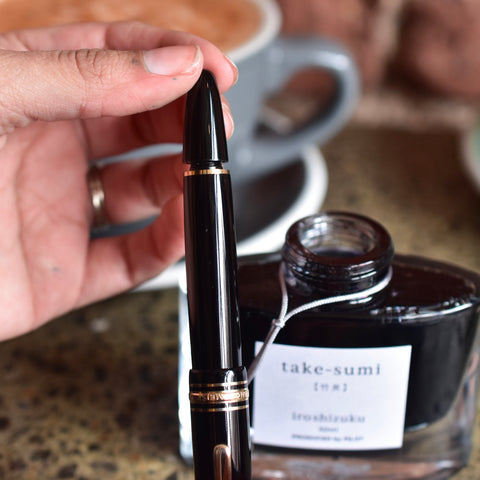
Then, simply insert the nib into a bottle of ink, and twist the piston the opposite direction. This draws that precious liquid gold inside the internal reservoir by retracting the piston, which also seals it from leaking. You can wear that white dress shirt with confidence now!
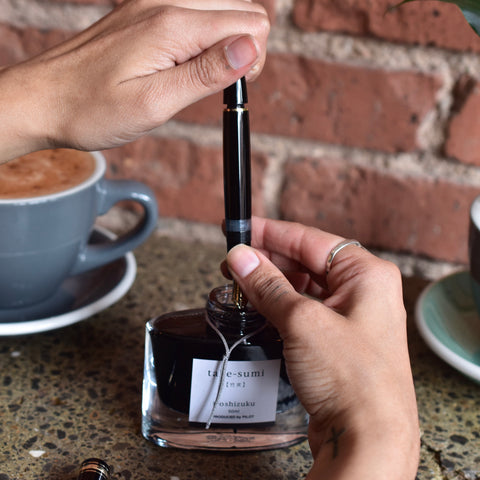
After you have filled your pen, you may want to dab it on a cloth to remove the excess ink on the nib, unless you enjoy getting a little messy. Now it’s time to write!
Vacuum fillers
Used by brands such as Visconti on their top of the line Homo Sapiens, and Opera models.
They are highly complex to produce, but are pretty darn fun to use! To start, twist the knob at the end of the pen out completely. You’ll feel that the knob is loose once it has been completely untwisted.
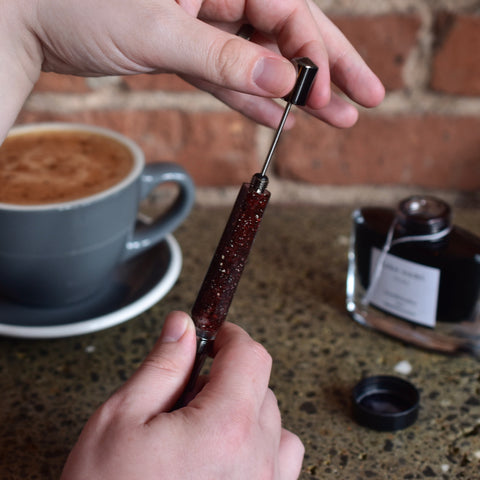
It may be a little tight, but now you can pull the knob towards you. This pulls the plunger up the barrel, which creates a low-pressure environment inside the chamber of the pen.
Insert the nib into an ink bottle, and now push the knob all the way back in. It’s important to allow 5-10 seconds for the chamber to fully fill with ink.
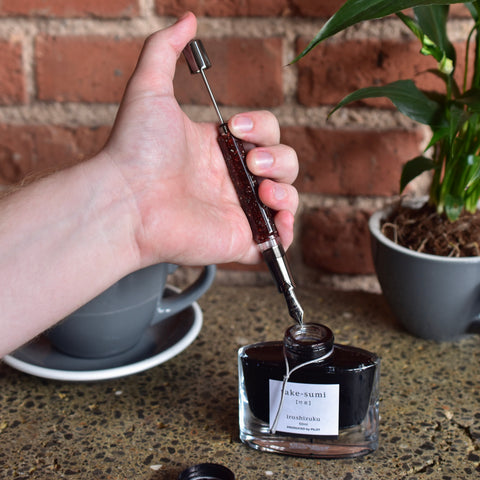
Then you can twist the knob back into place, and your fancy new pen is ready to manifest your visions!
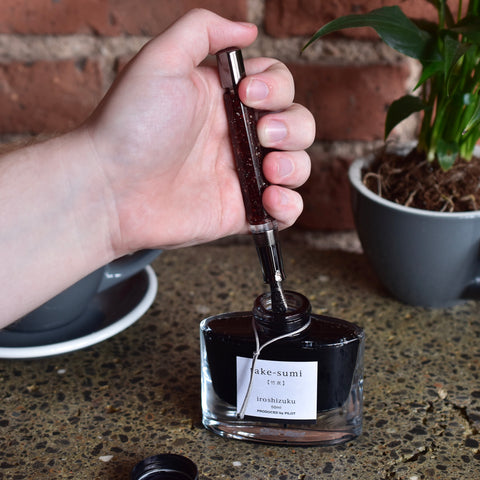
Crescent filler
Used on some Conklin pens. It consists of a crescent-shaped metal piece that must be pushed inside of the barrel.
It’s kind of awkward at first, but super easy once you figure it out. There is usually a plastic piece that goes underneath the crescent.
You can twist this piece around until the opening lines up with the crescent, which allows it to be pressed into the barrel. This piece prevents you from accidentally discharging ink in your pocket.
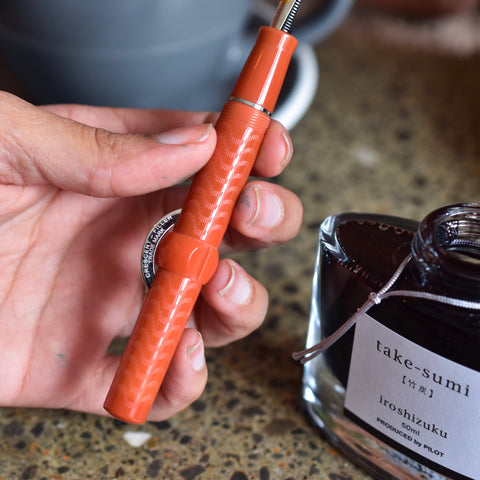
When depressed, this collapses the ink sac inside the pen. Then, simply insert the nib into your favorite ink bottle, and let the crescent piece go and the pen fills with ink.
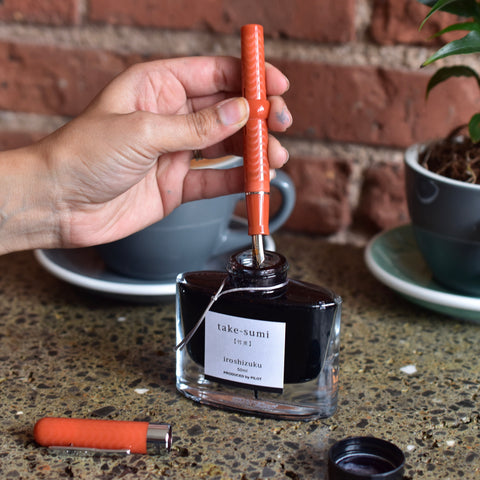
The crescent can also act as a roll stopper for that crooked desk in your office!
Cartridges and Converters
Cartridge Filled

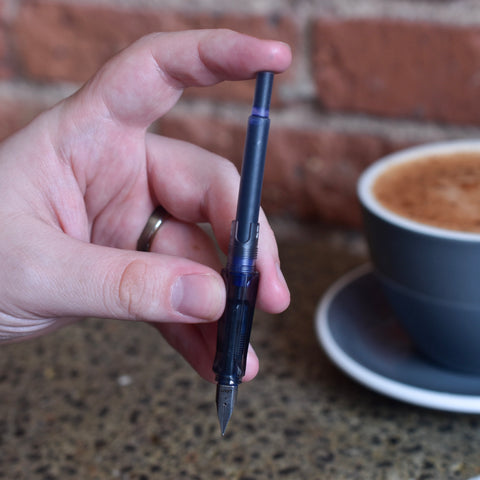
Piston Converter Filled
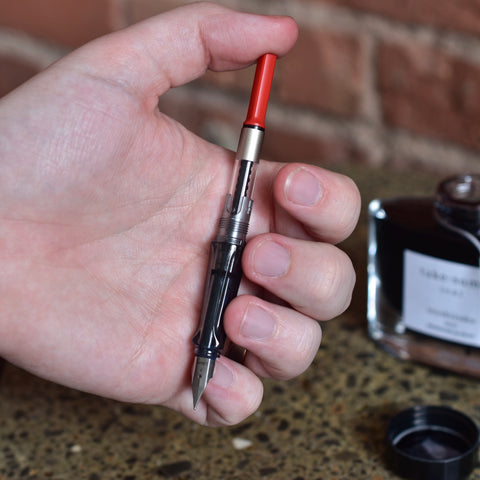
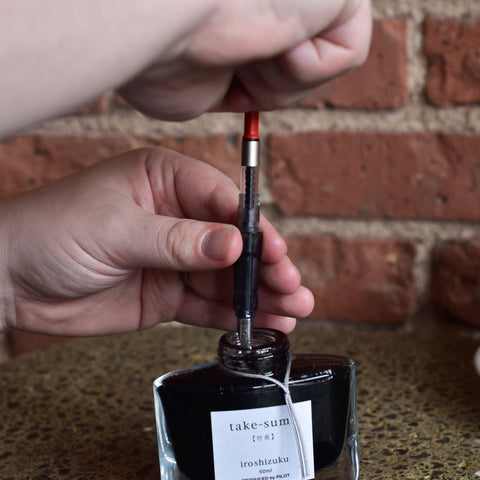
Squeeze Converter Filled
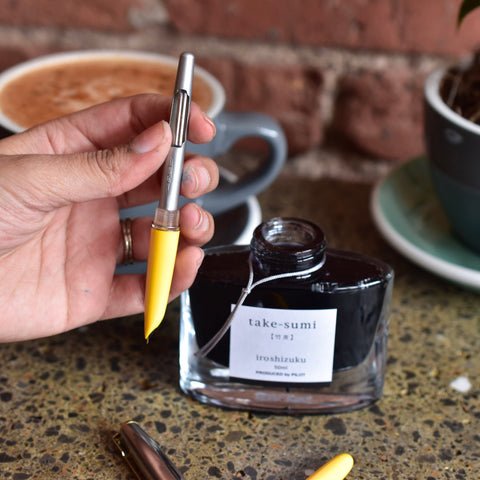
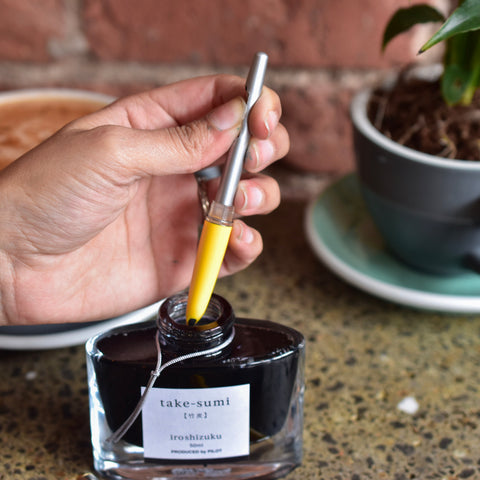
Cartridges vs. Converters
So why would I choose to use a cartridge over a converter? There are a few reasons. Some converters require long stems that you must twist in order to move the plunger inside.
This means that it only holds enough ink to fill the bottom portion of the unit. With a cartridge, the entire unit is filled with ink, which means that you sometimes have double the amount of ink in a cartridge that you would have in a converter. If you’re a nerd like me, though, you’ll probably want a converter, even though it holds less ink. Hey, you can trade out ink colors more often this way!
Built-in vs Hand Installed Mechanisms
Some fountain pen lovers prefer built-in mechanisms due to the fact that they hold such a large quantity of ink. This means that you won’t have to keep refilling your pen all the time if you are a heavy writer. The downside is that these pens tend to be a bit more expensive, and they cannot be used with ink cartridges, so you have to spend that Starbucks money on bottled ink.

Here are a few of our favorite pens from all fill types!
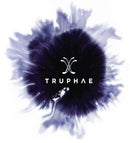
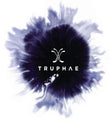







Leave a comment